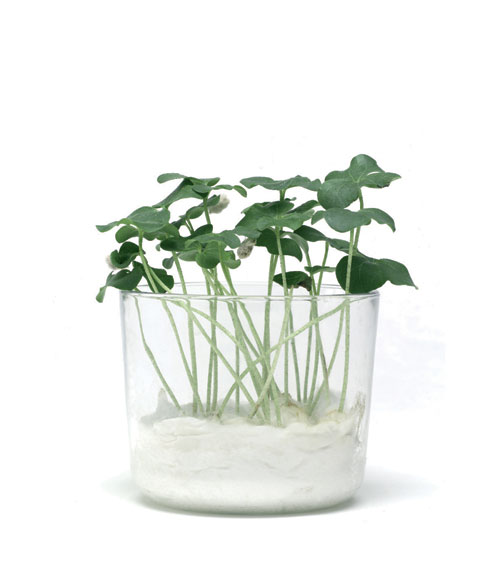
Meriç Kara’s b-sides project started out, as the name suggests, as an enjoyable distraction from her masters at Milan’s Domus Academy in 2002. “I created about 30 to 40 designs in two months while I actually had to concentrate on my thesis,” she confesses.
B-sides are inspired by Kara’s everyday surroundings and observations: household products, discount garments, glimpse of nature in urban environments, and her sojourn in Italy. The ever-expanding range is linked only by its conceptual wit: the products create surreal if strangely logical short-circuits between objects and their expected functions. There’s the car-door handle with attached car key, the cheese board with mousetrap, and the buttonhole flower that lives in its own water phial. “Some have a connection with people through habits or accidents, or they only have a sense of humour. Their common point is ‘the idea behind’.”

Having returned to her native Turkey in 2005, Kara is now working on several projects, including a design shop in Istanbul for a well-known advertising and communications agency. She’s busy enough not to worry terribly about putting the more than 20 existing “sides” into production. Nor is she concerned about who will buy them: “I would love to see them in a supermarket, especially the shoe dust [a tin of dirt to make new trainers look less white]. Everything in its right place but I guess they would end up in a design shop.”
Originally published in icon on June 2006, this was my first article written for the magazine. The editor on this piece, Kieran Long, sadly edited out the bit when I said “She started making the [b-sides] visuals before holding a scholarship at Fabrica, where she stayed for two years at the design department of Benetton’s research centre in Treviso”. I later asked him if icon could correct it, as Meriç’s stay at Fabrica was essential for this project. Long’s justification however was enough for me: “The story wasn’t about Fabrica, it was about Meriç Kara. We had limited space and the focus was on the work. I don’t think there is a good reason to run a correction, and Fabrica should be pleased that someone who they gave a scholarship to has had coverage in an international design magazine.” Welcome to the world of editing, I thought.